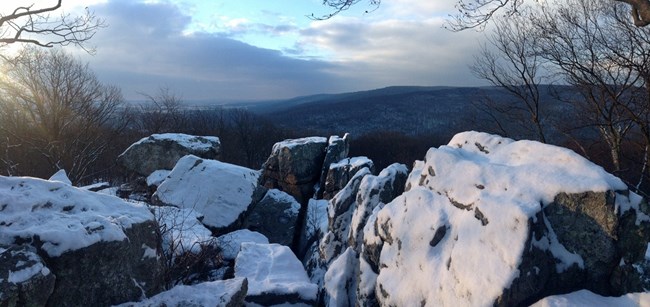
NPS/Connor Henzel Born of a Dynamic ClimateLong-term changes in the terrain and climate are normal and have been occurring since the beginning of the Earth itself. However, human influences on the environment are occurring at a faster rate than any other time in history: faster than life can adapt to them. The natural rate of evolution simply can’t keep up with some of the changes now occurring. Under current climate models, water temperatures in Big Hunting Creek at Catoctin are projected to become too warm for native brook trout (docx. 5.52MB) to survive there. Catoctin Mountain Park was born from changes in the position of the tectonic plates that make up the Earth’s crust. The rocks of Chimney Rock were once beach sand that settled to the bottom of the sea. It became deeply buried, and was compacted over time into sandstone. The later collision of North America and Africa squeezed the rocks into a great mountain belt, the ancestral Appalachians. This squeezing also changed the minerals of the rocks themselves: sandstone turned into quartzite. Weather, erosion, and time later wore the mountains down to their present height. Weather continues to play an important role in the evolution of Chimney Rock. Water seeps into tiny cracks along regular planes in the formation. When this water freezes in the winter, it expands and forces the cracks apart. This frost wedging creates the angular patterns in the rock we see today. Monitoring ChangeUnderstanding the condition of natural resources in national parks is fundamental to the National Park Service's ability to fulfill its mission to conserve park resources and leave them "unimpaired for the enjoyment of future generations." In support of parks, the National Capital Region Inventory and Monitoring Network monitors ecosystem "vital signs" including water, air, plants, animals, and various ecological, biological, and physical processes. These vital signs represent the overall health or condition of park resources, and allow park managers to track the condition of resources over time. Park biologists, and researchers from federal agencies and universities conduct additional on-the-ground research in the park, including water quality tests, deer population surveys, disease research, and invasive plant mapping. These studies inform management decisions at Catoctin Mountain Park and tell the broader story of natural and cultural resources in the Appalachian region. Future Challenges to Eastern ForestsClimate change increases the uncertainty about the future of the region’s forests. Longer growing seasons and higher atmospheric CO2 concentrations may increase productivity. However, the changing climate tends to intensify or add to stresses that already exist for a species. Less healthy tees have increased vulnerability to drought, changes in suitable habitat, invasive species, pests and pathogens, wildfire, and air pollution.
The loss of trees in Catoctin Mountain Park reduces habitat availability for native flora and fauna and results in a less rich forest ecosystem. DroughtDecreasing soil moisture and increasing plant demand for water as the growing season lengthens are likely to worsen summertime drying and contribute to drought-induced plant stress. Although overall precipitation is increasing in the central Appalachians, extreme weather events and erratic timing between rainfalls is also on the rise, potentially leading to more drought events. Timing of Biological EventsWildlife that depend on seeds, nuts, fruit, and nectar from plants synchronize their life cycle with the availability of these resources. For example, some insects time their spring emergence with the development of certain plants. As the annual timing of seasonal weather patterns shifts, these critical synchronizations may unravel. 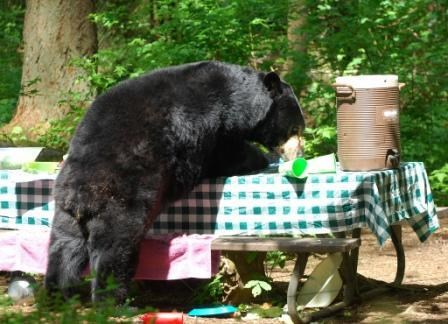
NPS Photo Black Bears and HibernationAs winters become warmer, and more compressed, hibernation cycles are disrupted. Bears are going into hibernation later in the winter, and waking up earlier in the spring. This increases the risk for human-bear encounters as the animals are more active throughout the year and changes in food availability force them to forage in closer proximity to human populations. Black bears prefer to avoid people, and rarely cause human injury. You may have even happened across one on the trail without even knowing it! A black bear will get away at the first sign of an approaching hiker, well before you notice it. Storing your food and disposing of garbage properly can mean life or death to a bear. Bears learn quickly and will return to areas where they find food. Not only can this be dangerous for people, but it is also harmful to bears that may need to be euthanized if they become too habituated to people and forage in campgrounds. Follow bear safe practices when traveling in bear country and camping in the park. 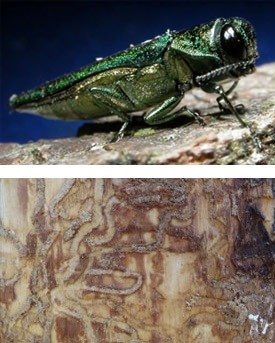
Top: David Cappaert, Michigan State University. Invasive Species, Forest Pests, and Plant PathogensClimate change in the mid-Atlantic is likely to lead to increased exposure and susceptibility to invasive species, pests, and pathogens as trees are put under greater stress. Invasive species may have a negative effect on plant productivity if individual trees face increased competition from nonnative plants and woody vines. Invasive plants at Catoctin include Japanese barberry, mile-a-minute, and garlic mustard. Pests and pathogens, such as the hemlock woolly adelgid or pine blister rust, are already having major effects on forest productivity in the United States and Canada. Climate change is likely to increase their impact as rising temperatures reduce winter pest die-off. The emerald ash borer is one of many exotic threats to Catoctin Forests. These small green insects arrived hidden in wood packing materials from Asia and are responsible for the destruction of tens of millions of ash trees in 30 states. Ash trees are some of the most valuable and abundant North American woodland trees. Ecologically, they host 150 species of native moth and butterfly larva, a food source important to birds. The emerald ash borer beetle cannot fly very far, but it can travel great distances hidden under of the bark of firewood. Never move firewood from one area to another and only buy firewood from local sources and burn it where you buy it. 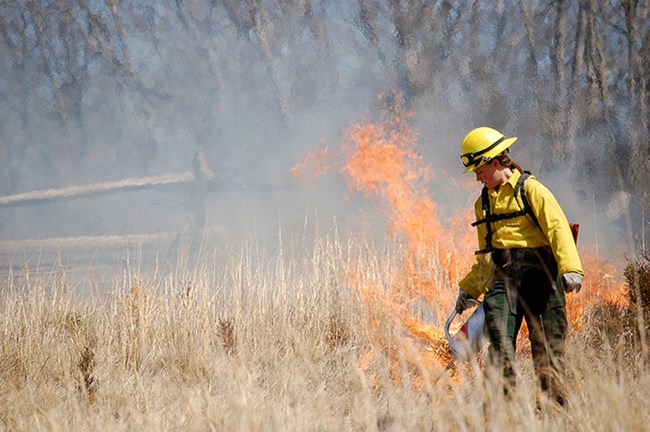
NPS Photo WildfireDue to a longer growing season and increased risk of drought, the fire season has become longer and your risk of exposure is greater. Additionally, the spread of exotic species increases fuel loads through the increase of biomass and mortality of native plants, while winter storms and wind events cause more downed woody debris. Air PollutionAir-borne pollutants can change productivity and influence how trees respond to climate change.
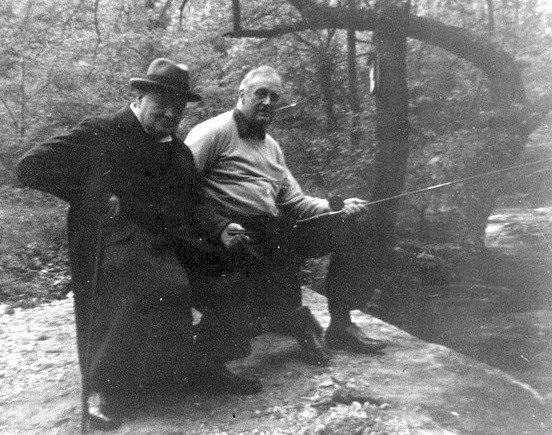
Public Domain Photo Brook Trout and Stream TemperatureA recent U.S. Geological Survey report found that increasing temperature may negatively affect the population of native brook trout (docx. 5.52MB) native brook trout Big Hunting Creek, one of the most significant freshwater fisheries in Maryland. Big Hunting Creek has played a prominent role in the development of recreational trout fishing in Maryland. The stream has long been popular among fly fishers. It is the birthplace of the Brotherhood of the Jungle Cock, an organization dedicated to helping young people understand and appreciate the sport of angling and the resources upon which it depends. Big Hunting Creek was the first stream in the State of Maryland to be designated as fly-fishing only. Later it became Maryland's first catch-and-release trout stream. Researchers studied fish populations in the watershed and modeled how future temperature increases would affect brook trout. These fish depend on cold water environments to survive, and are already under stress from invasive brown trout encroaching on their habitat. 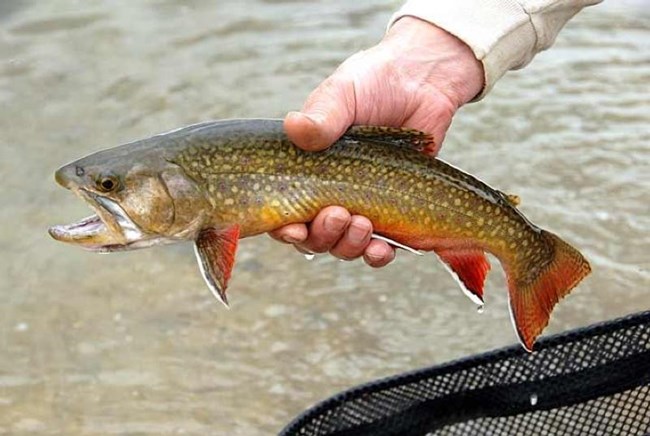
NPS Photo Their findings show reduced habitat for brook trout on the mountain:
Researchers also anticipate increasing winter storms will harm fish populations. Extreme rain events can send a gush of water into streams that wipe out fish eggs from the streambed. These wash-out events are some of the most important factors that affect populations. You can help protect spawning grounds by not walking in streambeds. Preserving Historic StructuresIn the 1930’s, cabin camps were built in Catoctin to encourage people to go outdoors and enjoy nature. Visitors have enjoyed these cabins for decades, but climate change threatens these historic structures, creating new challenges to preserving our historic structures. How does climate change affect Catoctin’s Historic Structures?
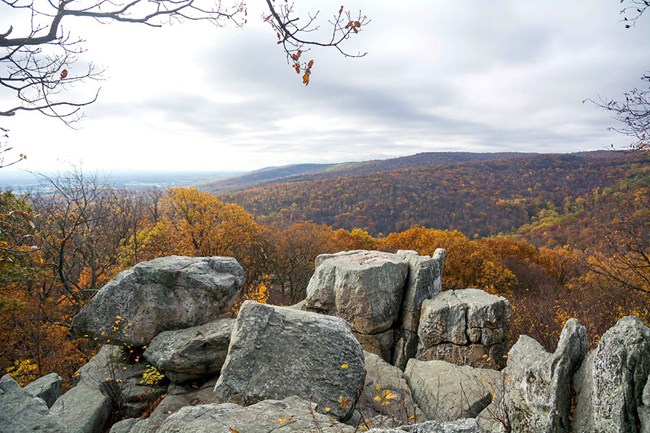
NPS/John Zuke Economic ImpactsThe forest products and forest-related recreation industries are major contributors to the region’s economy, providing 18% of all jobs in western Maryland. While extended growing seasons and the potential fertilization effect of CO2 should enhance forest productivity over the next century, several major confounding factors could work against this beneficial response, including increasing pressure from pests, pollution, greater competition from invasive species, acid rain, increased drought and fire potential, and altered winter freeze-thaw cycles. The local travel and tourism sector generates employment in retail trade, passenger transportation, arts and entertainment, recreation, food service, and lodging. Visitors to the park are an important part of this economy, bringing tourist dollars to local communities. Impacts on forest health and changes to viewsheds from pollution could negatively affect recreation activities and visitation to the park. The fall color season is one of the most significant draws for visitors to Catoctin Mountain Park. New weather patterns, including later fall cooling and increased risk of drought could lead to less brilliant fall foliage and reduced visitation. 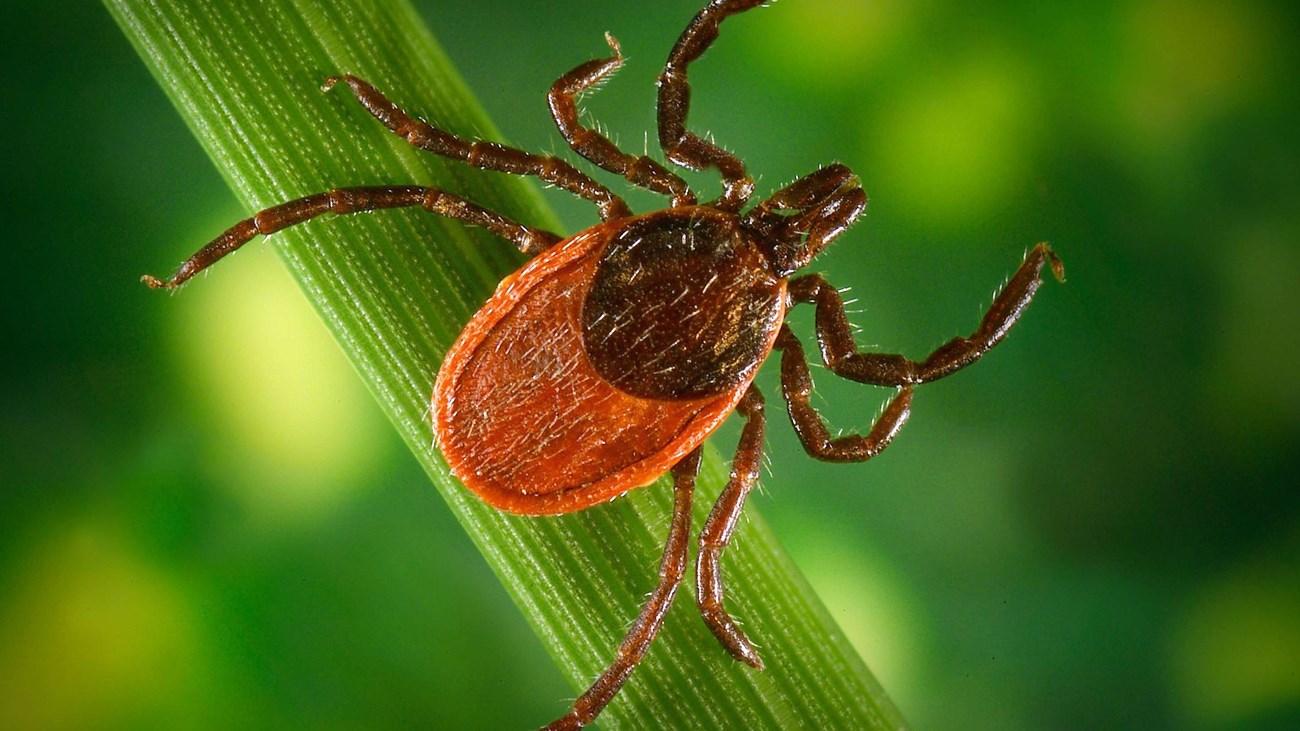
Health and Climate Change
Mosquito and tick-borne diseases are on the rise in a warming climate. 
Sustainability in the Park
From alternative fuels to energy saving appliances, the park is working towards a low carbon future. 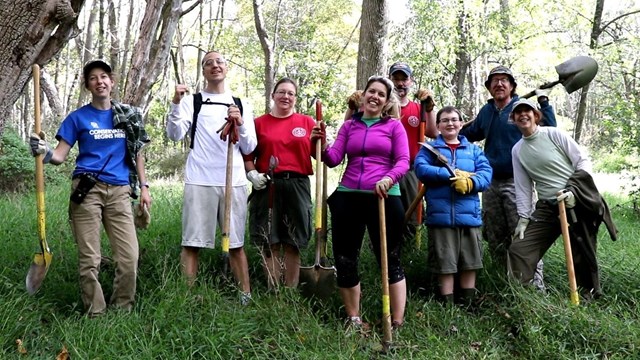
How You Can Help
You can be a part of the solution. At home, on the road, and in the park – get involved! 
Climate Change
The greenhouse effect is becoming stronger due to human activity. ReferencesU.S. National Park Service. Climate Change Trends for Resource Planning at Catoctin Mountain Park, Maryland. Climate Change Response Program. Washington D.C., 2012. |
Last updated: April 26, 2024
